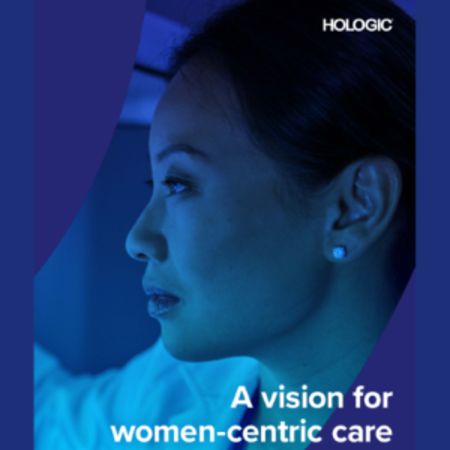Foreword
 For too long, there has been a one-size fits all approach to women’s healthcare, which does not consider the individual nature of women’s physiological, emotional, socio-economic and practical needs.
For too long, there has been a one-size fits all approach to women’s healthcare, which does not consider the individual nature of women’s physiological, emotional, socio-economic and practical needs.
This has been exacerbated by too few female voices involved in forming policy and health related decision making at the highest level. We believe there is a path to reducing this inequality in healthcare.
While women have the so-called ‘mortality advantage’, living longer than their male counterparts, these additional years can often be lived in ill-health. What is more, diseases that predominantly affect women, like breast and cervical cancer, often occur in their most productive years at a significant human and economic cost to families and societies across Europe.
My colleagues and I at Hologic are focused on how we can improve the healthcare that women receive across Europe. Our work on the Hologic Global Women’s Health Index, a worldwide study providing robust data on women’s health, has shown us that every country has room for improvement when striving to meet women’s healthcare needs. Crucially, through the Index, we heard directly from women themselves and it is our hope that this data will be used by policy makers across Europe and the globe to better understand women’s healthcare challenges, and adapt healthcare systems to their specific requirements.
Healthcare systems need to quickly evolve to place women at the centre of their care, and this starts with a personalised approach to the cancer screening process. Using language that speaks to each community, we need to engage women and encourage them to prioritise their Foreword health by attending screening opportunities and if concerned, to seek timely evaluation, diagnosis, and treatment. This is known as the Continuum of Care for Breast or Cervical cancer – throughout which we must ensure each woman has the best experience possible.
The following paper encapsulates our ambitions for a new approach to how we engage women in the screening process, help them through their diagnosis, and create a better treatment pathway – a new, improved, personalised patient experience throughout the Continuum of Care, with the needs of women in Europe at its core.
Women are the cornerstone of our families, societies and economies – we owe it to them to ensure they are listened to, and their access to healthcare is as personalised and innovative as possible.
Tanja Brycker
Vice President, Strategic Development, Breast & Skeletal Health and Gynae Surgical Solutions
1. Building a personalised screening experience for all women
The impact of national screening programmes cannot be overstated when discussing breast and cervical cancer mortality rates. It is a simple truth that in most cases, the earlier cancer is detected, the better the outcome. However, when the invitation to attend screening arrives or the calendar reminder pops up, it can provoke many different feelings, from heightened anxiety to indifference.
Giving someone ownership without burdening them is a delicate balance, but we need to strive for this to engage women and get them through the initial mental hurdle of attending their appointment. After all, you can have the most efficient and accurate technology possible, but it is rendered obsolete if you have no one to screen.
The scale of the challenge
Screening attendance figures vary from region to region, but what is clear is that we are far from 100% attendance. In breast screening for example, the most recent data for England showed national attendance was some way short of the acceptable rate of 70%, with uptake of invitations at 61.8%, albeit the disruption of the pandemic has played a part.1 For cervical screening, there appears to be higher attendance rates among the target group (women aged 25 – 64), with 70.2% of eligible women adequately screened.2
Getting to the heart of the reasons women do not attend screening appointments is key. Research has shown factors such as education and social background can play a big part, as evidenced by a recent literature review on the potential barriers to cervical screening attendance identified five theoretical domains: ‘emotional’, ‘social influences’, ‘knowledge’, ‘environmental context and resources’ and ‘beliefs about consequences’.3
Clearly, these are deep-rooted beliefs, behaviours and social circumstances, but there are certainly measures that can be taken to make the system as efficient, effective and convenient as possible while equipping women with the knowledge they need to make an informed decision about the screening process.
We have identified three areas for improving health policy:
- Limiting unnecessary screening by introducing risk identification and prioritising those with a higher risk profile
- Improving convenience and accessibility of screening services
- Using relevant language and demystifying the process

Limiting unnecessary screening by introducing risk identification and prioritising those with a higher risk profile
A risk profile can provide greater knowledge and understanding, which could help with early diagnosis and establishing a personalised care pathway, but it can also be intimidating. There are certain risk factors in both breast and cervical screening that are well understood, such as dense breasts, family history and elevated body mass index (BMI) in the case of breast cancer4, and persistent HPV infection, particularly with type 16 and type 18 in the case of cervical cancer.5 We should make best use of this information to start building a more personalised screening programme that determines screening interval and type of test used according to each woman’s risk.
For example, women who are aged 40 - 50 are thought to have more dense breasts,6 so are considered to have a higher risk of developing breast cancer.
This would unlock the potential to catch more cancers in women, without compromising the economic viability of the screening programme.
This would clearly require infrastructure change, but also a change in how we communicate with women to help them approach screening with understanding and ownership. Risk does not have to be – and should not be – threatening, but rather a tool in our arsenal to identify and tackle cancer earlier.
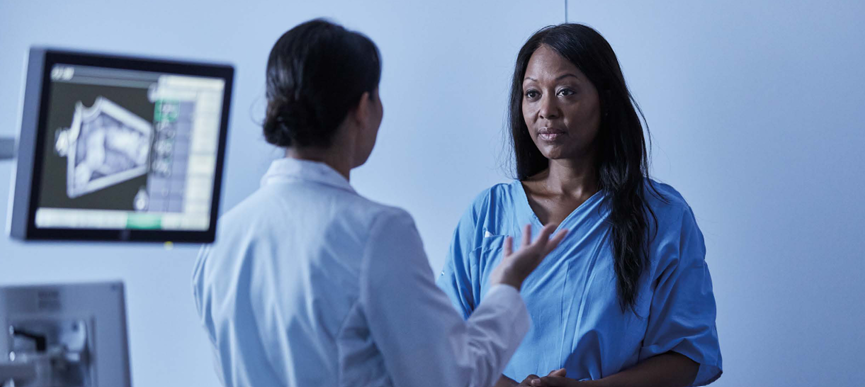
Improving convenience and accessibility of screening services
When leading a busy life and juggling responsibilities, making time for a screening appointment can seem like just another task on a never-ending to do list. Making screening appointments as easy and as simple as possible should be a priority for healthcare systems. The Guidelines Development Group for the European Commission Initiative on Breast Cancer (ECIBC) has recommended using a letter with a fixed appointment date and time when inviting women for screening to remove the burden of diary management,7 which is a useful first step, but there are other measures that can be considered.
A recent study undertaken by BreastScreen Norway found the quality of care did not differ between mobile and static breast screening units, but noted that attendance was higher at mobile units.8 Making screening more accessible, particularly in rural or socially deprived areas, with mobile screening can make a marked difference to attendance.
When it comes to cervical screening, there have been many conversations on self-sampling as a possibility to help with screening attendance, particularly for women who have been categorised as ‘harder to reach’. We believe it can play an important role for women who have not responded to screening in the past, but that a clinician collected sample is best as it allows further cytology testing from the same sample if necessary. However, any method that encourages women to be tested should be considered.
Using relevant language and demystifying the process
Having readily available information described in simple terms can be a key factor in encouraging women to attend screening. Thoughts of embarrassment and worries about pain or discomfort persist in both breast and cervical cancer screening, showing a clear need for matter-of-fact information that is relevant and relatable to the target groups. This is not just the responsibility of healthcare systems, but also an important consideration for the diagnostics industry.
The importance of the language we use should not be forgotten either, both in terms of removing complex jargon and providing information in a range of languages and a socially sensitive manner, particularly in areas where there is a diverse multicultural community.

2. First-in-class detection and diagnosis
In our view, there are two critical ingredients to deliver as positive an experience as possible to women when it comes to detection and diagnosis: timely results, minimising lengthy, anxious waits, and confidence in their results that comes from clarity on the next steps and using the most up-to-date and accurate technology.
Once women have made the commitment to attend a screening appointment or seek further medical care in the case of those living with gynaecological disorders like fibroids or endometriosis, it is crucial to smooth the way for them, rather than creating additional hurdles.
Driving greater efficiencies in the system
National breast and cervical screening programmes have been introduced in the majority of European countries and have undoubtedly had a positive impact, but now we need to look for ways to maximise existing capacity and resources.
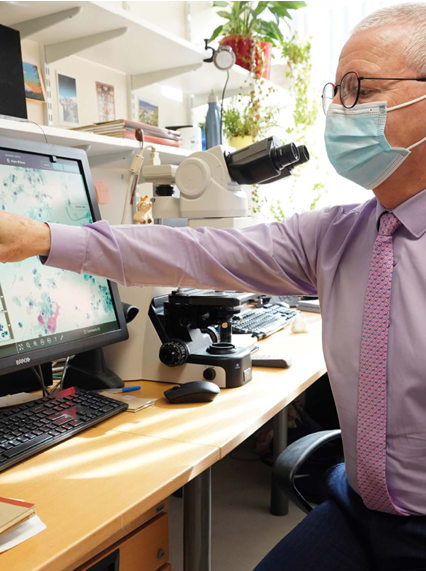 We believe implementing innovative new technologies will help prioritisation and make systems work even more efficiently. Artificial intelligence (AI) and machine learning have huge potential to improve detection and diagnosis turnaround times, by helping to identify the most diagnostically relevant information and highest priority cases and bringing them to the front of the queue for further analysis.
We believe implementing innovative new technologies will help prioritisation and make systems work even more efficiently. Artificial intelligence (AI) and machine learning have huge potential to improve detection and diagnosis turnaround times, by helping to identify the most diagnostically relevant information and highest priority cases and bringing them to the front of the queue for further analysis.
We are currently working with two labs in Europe to pilot a digital cytology system using artificial intelligence to investigate how it can positively impact cervical screening and reduce false negatives in analogue screening programmes.
In the case of breast screening, radiology has been quick to adopt digital imaging, but given resourcing crunches across Europe with some areas struggling with recruitment, there is a genuine need to have existing systems working as hard and efficiently as possible. By using AI to aid prioritisation, there is a potential to reduce reading times
Finally, in the case of conditions like fibroids and endometriosis, there are clear margins for improvement. In the UK for example, it’s estimated that it takes an average of eight years to secure a diagnosis for endometriosis, which represents countless days in pain for those living with the condition.9
Better education for healthcare professionals and women plus more streamlined pathways are a must to halve diagnosis times and give women better quality of life.
Greater certainty and peace of mind
 Once women have received their result, we want them to have maximum confidence in it and total clarity on the next steps.
Once women have received their result, we want them to have maximum confidence in it and total clarity on the next steps.
In terms of cervical screening, there is sometimes a need for further investigation in the form of a colposcopy, which can be an invasive procedure that heightens anxiety for women.
If a need for a colposcopy or further procedure, such as a biopsy has been clearly established, this should be communicated in the simplest of terms to women so they are clear on why they have been recalled, what the additional procedure involves and what they can expect afterwards. Communication after a negative result is also crucial, so women understand they need to continue to attend after the specified interval. This will be all the more important should healthcare systems adopt a risk stratification process, which would see a more personalised approach, with women attending after an interval determined by their risk profile.
Breast cancer screening could also benefit from using a more personalised approach by adapting the form of screening that is used according to each individual’s risk profile. Tools such as 3D Mammography (also referred to as tomosynthesis) are recognised to be more effective for women known to have dense breasts; it detects up to 65% more invasive breast cancers, and reduces recalls of patients by up to 40%, when compared to traditional 2D mammography alone.11,12
Clearly the most important benefit of this move would be giving women a more definitive result without an additional anxiety-inducing procedure, but it would also have knock-on benefits for the system, saving money and crucially time for a resource-constrained workforce.
3. Treating the woman, rather than the condition
Treatment is arguably the most emotional step on a woman’s healthcare journey, whether it’s the first time they’re being treated or returning after a relapse. It can feel like an alien process, when women are handing over their bodies – and trust – to healthcare professionals. It is essential we do not take this trust for granted and, as much as possible, we listen to women and give them the agency and opportunity to make decisions and shape their own healthcare journey.
This means presenting different options where possible – for example, in the past, there has been a school of thought that it is better to remove the entire reproductive system or breast as a pre-emptive strike. While there may be cases where this is indeed the best course, it can have a huge emotional and physical impact.
As improvements are made in biopsy and investigative pre-operative procedures in the breast health field, our hope is that surgeons will be able to use their skill to isolate the treatment areas and take a less invasive approach, especially if this is something of great importance to the woman they’re treating. Reducing cosmetic impact and lessening recovery time should help to give women back some control during a difficult and emotionally stressful period.
When it comes to conditions like abnormal menstrual bleeding, a hysterectomy is often presented as the only option when other non-surgical methods have been tried. This not only takes its toll on the body in a physical sense, but can mean giving up on carrying a child and precipitate early menopause. For some women, this may be the best solution, but for others, it is a frightening and unnecessary last resort. There are alternatives that should be presented to women, which often aren’t through lack of clinical knowledge, which preserve the uterus such as minimally invasive tissue removal, which is a quick 5-minute procedure, reducing heavy periods.
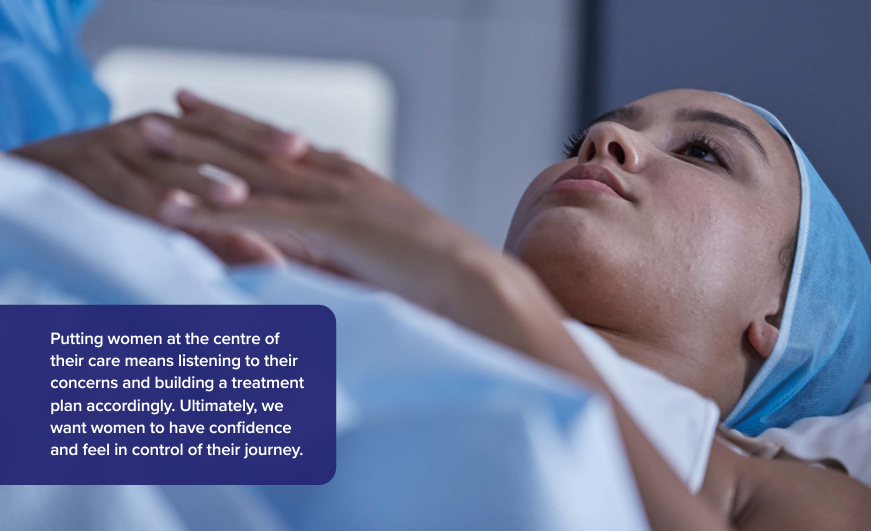
Prioritising patient recovery
Increasing convenience and reducing recovery time are principles that are being applied in some innovative gynaecology departments, where healthcare services across Europe are investigating ways to move some procedures, like removing fibroids, to an outpatient setting. This means women are seen as a day case and do not need a general anaesthetic.
With no overnight hospital stay needed, they are able to return home after the procedure to recover in more comfort and convenience. It can also have a beneficial impact on staffing, as fewer people are required than in a theatre setting, freeing up time to increase the volume of procedures.
We know there is an extremely long treatment journey for conditions like endometriosis, with women living months and even years in pain.
Some health service providers are going further and providing ‘see and treat’ gynaecology clinics, meaning women are treated when they attend for investigatory appointments. These clinics can clearly have a huge positive impact on women’s experience, as they only have to attend once and can be treated within the day. There are of course practical implications for providers adopting this model, with potential staff restructuring needed and an inherent need for flexibility should certain patients need a longer treatment time or a further referral if they have a complex case.
It marks a significant departure from the longheld approach of outpatient consultations followed some time later by in-patient surgery. However, while it may not be appropriate for all, we welcome innovation in a field that has traditionally been overlooked.
Fundamentally, the most important issue is that women feel their concerns have been heard and that the recommended clinical steps have been devised with their personal needs in mind.
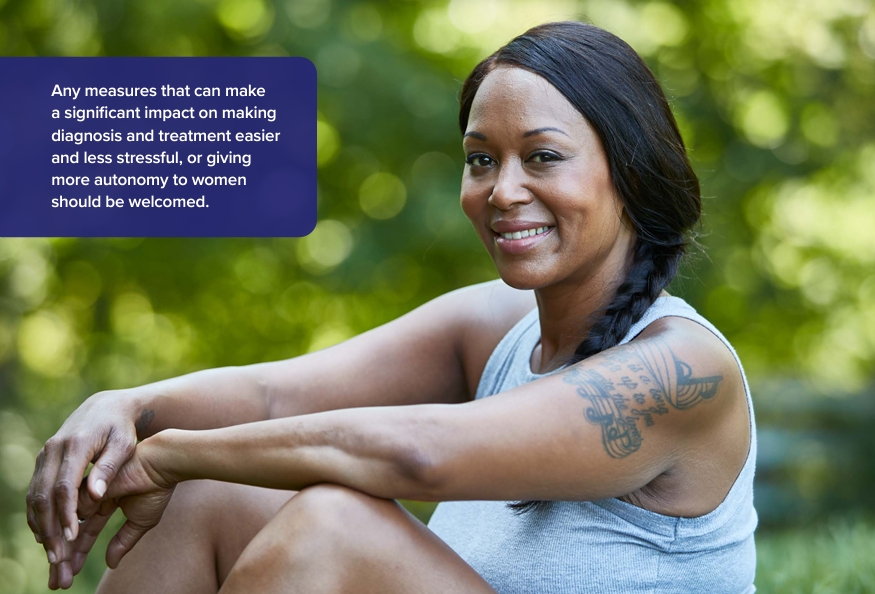
In summary
It has been encouraging to see an increased emphasis on women’s health in recent years and a recognition that we need to consider personalised pathways for women based on patient need and crucially, preference.
What is clear, however, is that there is a long road ahead and more progress still needs to be made to reduce inequality in healthcare.
By charting a bolder path and embracing innovations like personalised screening and artificial intelligence, we can take collective steps to provide a better experience for women and build healthier societies and economies.
In this paper, we have identified three key points on the journey where healthcare leaders, clinicians and policy makers can make a difference to women’s experience:
- Making the screening process as convenient and efficient as possible
- Clarity and confidence in diagnosis and next steps
- Prioritising patient comfort and choice when developing an onward treatment plan
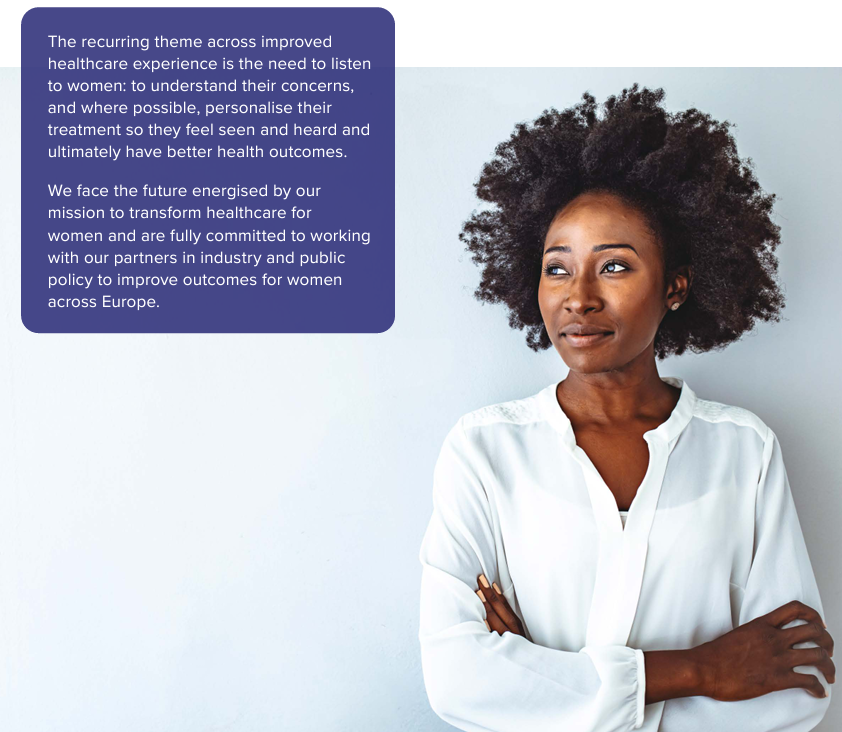
Source: Hologic
References:
- NHS Digital, NHS Breast Screening Programme, England 2020-21. Available at: https://digital.nhs.uk/data-and-information/ publications/statistical/breast-screening-programme/england---2020-21/mainreport6#section-4-uptake-of-invitations . Accessed September 2022.
- NHS Digital, Cervical Screening Programme, England - 2020-21 [NS]. Available at: https://digital.nhs.uk/data-and-information/ publications/statistical/cervical-screening-annual/england--2020-2021 . Accessed September 2022.
- Stuart G, D’Lima, D. Perceived barriers and facilitators to attendance for cervical cancer screening in EU member states: a systematic review and synthesis using the Theoretical Domains Framework. Psychology & Health, 2021;37(3):279-330.
- Cancer Research UK. Breast Cancer, Risk Factors (c. 2020) Available at: https://www.cancerresearchuk.org/about-cancer/ breast-cancer/risks-causes/risk-factors
- World Health Organisation. Cervical Cancer fact sheet (2022). Available at https://www.who.int/news-room/fact-sheets/detail/ cervical-cancer
- Checka CM, Chun JE, Schnabel FR, Lee J, Toth H. The relationship of mammographic density and age: implications for breast cancer screening. AJR Am J Roentgenol. 2012 Mar;198(3):W292-5
- European Commission. Inviting women to screening: Letters with fixed appointment to screening (2022). Available at: https://healthcare-quality.jrc.ec.europa.eu/european-breast-cancer-guidelines/Invitation-to-screening-and-decision-aid/ invite-50-69/fixed-appointment
- Holen A, Sebuødegård S, Waade G, Aase H, Hopland N-M, Pedersen K et al. Screening at stationary versus mobile units in BreastScreen Norway. Journal of Medical Screening. Mar 2020; 27(1):31-39. Available at https://journals.sagepub.com/ doi/10.1177/0969141319875158
- All Party Parliamentary Group on Endometriosis, UK. Endometriosis in the UK: time for change, APPG on Endometriosis Inquiry Report 2020. Available at: https://www.endometriosis-uk.org/sites/endometriosis-uk.org/files/files/Endometriosis%20 APPG%20Report%20Oct%202020.pdf
- Weston G, Dombrowski C, Harvey MJ, Iftner T, Kyrgiou M, Founta C, et al. Use of the Aptima mRNA high-risk human papillomavirus (HR-HPV) assay compared to a DNA HR-HPV assay in the English cervical screening programme: a decision tree model based economic evaluation. BMJ Open 2020;10:e031303
- Friedewald SM, Rafferty EA, Rose SL, Durand MA, Plecha DM, Greenberg JS, et al. Breast cancer screening using tomosynthesis in combination with digital mammography. JAMA. 2014 Jun 25;311(24):2499-507
- Rafferty E, Park J, Philpotts L, Poplack SP, Sumkin JH, Halpern EF, et al. Assessing Radiologist Performance Using Combined Digital Mammography and Breast Tomosynthesis Compared with Digital Mammography alone: Results of a Multicenter, Multireader trial. Radiology, 2013 Jan; 266(1):104-13





